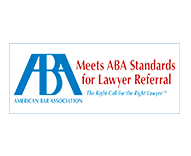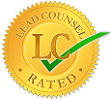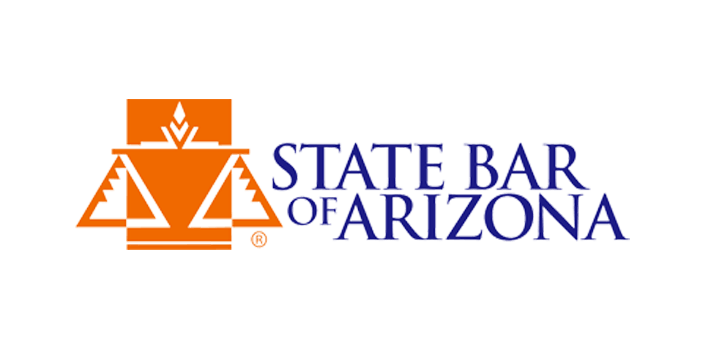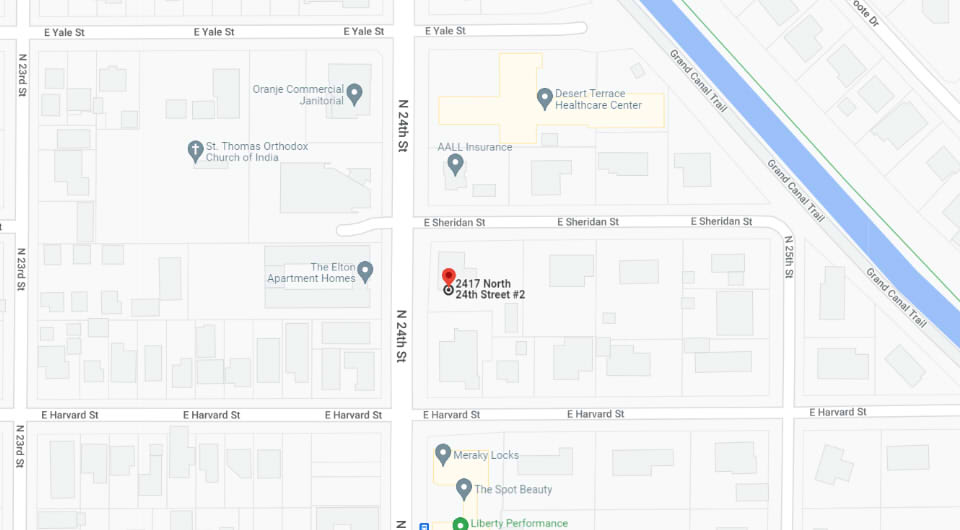Birth paralysis is a challenging medical condition that emerges during childbirth, affecting an infant's ability to move and control specific muscles in the body. The causes of birth paralysis are multifaceted and can be rooted in complications during labor, maternal health issues, or the utilization of certain medical interventions. Medical malpractice can also lead to the development of birth paralysis, adding a layer of complexity and potential legal implications to this already distressing situation. If your loved one has developed birth paralysis due to medical malpractice, it is crucial to take action. At Phoenix Personal Injury Attorney Law Firm, we can help you understand your rights and explore the options available to seek fair compensation.
Understanding Birth Paralysis
Birth paralysis, medically known as neonatal brachial plexus palsy (NBPP) or Erb's palsy when it affects the arm, is a challenging and often emotionally fraught medical condition that occurs during childbirth. This condition is characterized by the partial or complete loss of motor control in specific muscles of an infant's body due to damage to the brachial plexus, a network of nerves responsible for controlling the muscles of the arm, hand, and, in some cases, other parts of the body.
Medical Malpractice and Birth Paralysis
Medical malpractice occurs when healthcare providers, including doctors, nurses, and other medical professionals, fail to meet the standard of care expected in their field, resulting in harm to a patient. In the context of childbirth, medical malpractice can involve errors or negligence before, during, or after delivery. When it comes to birth paralysis, medical malpractice is often associated with issues that occur during labor and delivery.
Common Scenarios of Medical Malpractice Leading to birth paralysis:
- Excessive Force During Delivery — One of the primary causes of birth paralysis is excessive force during childbirth. Healthcare providers must exercise caution and expertise when using forceps or vacuum extractors to assist in the delivery process. Improper use of these instruments or excessive force can lead to brachial plexus injuries, resulting in birth paralysis.
- Failure to Recognize Risk Factors — Healthcare providers have a duty to identify and address risk factors that could increase the likelihood of complications during childbirth. Conditions like gestational diabetes or a large baby may require specialized care or even a cesarean section to reduce the risk of injury. Failure to recognize and respond to these risk factors can constitute medical malpractice.
- Delayed or Incorrect Diagnosis — Prompt and accurate diagnosis of complications during childbirth is crucial for preventing birth injuries. In cases where a healthcare provider fails to diagnose fetal distress or other complications, there may be grounds for a medical malpractice claim.
Symptoms of Birth Paralysis
Birth paralysis can manifest with various symptoms, ranging from mild weakness to complete loss of motor function in the affected limb. To better understand this condition, let's explore the symptoms associated with birth paralysis:
Limited or Loss of Muscle Control
The hallmark symptom of birth paralysis is the inability of the affected infant to move and control specific muscles in the arm, hand, or, in severe cases, the entire affected limb. This loss of muscle control occurs due to nerve damage that disrupts the signals between the brain and the muscles.
Muscle Weakness
In less severe cases, infants with birth paralysis may exhibit muscle weakness in the affected limb. This weakness can vary in intensity and may be noticeable when attempting to move or manipulate the limb.
Abnormal Posture
Infants with birth paralysis may assume an abnormal posture in the affected arm. In the case of Erb's palsy, the arm may be extended and turned inward, resembling a "waiter's tip" position. This posture results from the imbalance in muscle control due to nerve damage.
Lack of Reflexes
In some instances, affected infants may exhibit a lack of reflexes in the affected limb. Reflexes that are typically present, such as the Moro reflex, may not be observed on the side with birth paralysis.
Limited Range of Motion
Birth paralysis can lead to a restricted range of motion in the affected limb. Infants may struggle to bend the elbow, extend the arm, or move the fingers normally.
Muscle Atrophy
Over time, muscle atrophy, or the wasting away of muscle tissue, can occur in the affected limb. This is a result of underutilization and decreased muscle activity due to the paralysis.
Pain or Discomfort
Some infants with birth paralysis may experience pain or discomfort in the affected limb. This can be due to nerve damage or muscle strain.
Developmental Delays
In cases of severe birth paralysis or when both arms are affected, developmental delays may become apparent as the child grows. These delays can impact a child's ability to reach developmental milestones, such as crawling and grasping objects.
Emotional and Psychological Impact
While not a physical symptom, the emotional and psychological impact of birth paralysis should not be underestimated. Both the affected child and their family may experience stress, frustration, and anxiety due to the challenges associated with the condition.
Diagnosis and Treatment for Birth Paralysis
Timely diagnosis and appropriate treatment are essential for the best possible outcomes.
Diagnosis of Birth Paralysis
Diagnosing birth paralysis typically involves a combination of medical history, physical examinations, and, in some cases, imaging studies. Here's how the diagnostic process unfolds:
Medical History and Physical Examination
- Medical history — The healthcare provider will gather information about the mother's pregnancy, labor, and delivery. This may include details about any complications, maternal health conditions, and the use of medical interventions during childbirth.
- Physical examination — The healthcare provider will carefully assess the newborn's overall health and perform a thorough physical examination, with a specific focus on the affected limb.
They will evaluate muscle strength, reflexes, range of motion, and the presence of any abnormal postures or asymmetries.
Nerve Conduction Studies (Electromyography)
In some cases, nerve conduction studies, such as electromyography (EMG), may be recommended. These tests can help identify the location and extent of nerve damage by measuring the electrical activity in the affected muscles.
Imaging Studies
Magnetic Resonance Imaging (MRI) or Computerized Tomography (CT) scans may be used to visualize the brachial plexus nerves and assess the extent of nerve damage. These imaging studies can provide valuable information to guide treatment decisions.
Treatment Options for Birth Paralysis
The choice of treatment for birth paralysis depends on various factors, including the severity of the condition, the specific nerves affected, and the age of the child. Treatment options may include:
Physical Therapy
Physical therapy is a fundamental component of treatment for birth paralysis. Skilled physical therapists work with the child and their family to improve muscle strength, range of motion, and functional abilities in the affected limb.
Occupational Therapy
Occupational therapists focus on improving the child's ability to perform daily activities and develop fine motor skills. They may use techniques and exercises to enhance hand and finger coordination.
Splinting and Bracing
In some cases, custom splints or braces may be prescribed to support and position the affected limb correctly, helping prevent contractures and promoting optimal development.
Nerve Surgery
When nerve damage is severe or if there is limited progress with conservative therapies, nerve surgery may be considered. Nerve grafts or nerve transfers can help repair damaged nerves and restore function to the affected limb.
Supportive Care
Birth paralysis often requires ongoing supportive care, including regular medical evaluations, monitoring for complications, and adjustments to the treatment plan as the child grows and develops.
Psychological and Emotional Support
Emotional and psychological support for both the affected child and their family is crucial. Coping with the challenges of birth paralysis can be emotionally taxing, and access to support networks and counseling can be invaluable.
Establishing Negligence in Medical Malpractice Cases Leading to Birth Paralysis
When it comes to birth paralysis cases, proving negligence is a critical component of seeking legal recourse. Establishing negligence involves demonstrating that a healthcare provider's actions or omissions directly led to the birth injury. Let's explore the key elements involved in establishing negligence in medical malpractice cases related to birth paralysis:
Duty of Care
The first step in proving medical malpractice is establishing that a doctor-patient relationship exists, which implies a duty of care. This duty of care means that the healthcare provider has a legal obligation to provide competent and appropriate medical care to the patient.
Standard of Care
Medical professionals are held to a specific standard of care, which is the level of care that a reasonably competent healthcare provider in the same field would provide under similar circumstances. It's crucial to determine what the standard of care was in the specific situation, as it can vary depending on factors such as the patient's medical history, the complexity of the case, and prevailing medical guidelines.
Breach of the Standard of Care
To establish negligence, it must be shown that the healthcare provider breached the standard of care. This breach typically occurs when a healthcare provider's actions or decisions fall below the accepted level of competence or care, leading to an adverse outcome. In birth paralysis cases, examples of breach of care might include the improper use of forceps or vacuum extractors during delivery or failure to recognize and respond to risk factors that could lead to complications.
Causation
Causation is a crucial element in proving negligence. It must be demonstrated that the healthcare provider's breach of the standard of care directly caused the birth paralysis. This often requires expert medical testimony to establish a clear link between the healthcare provider's actions and the resulting injury.
Damages
In medical malpractice cases, damages refer to the harm or injuries suffered by the patient. Birth paralysis is a significant and life-altering injury, and the damages may include medical expenses, rehabilitation costs, pain and suffering, emotional distress, and loss of future earning capacity.
Expert Witnesses
Medical malpractice cases, including those related to birth paralysis, often rely on expert witnesses who can provide informed opinions regarding the standard of care, the breach of that standard, and the causative link between the breach and the injury. These experts play a crucial role in helping the court and jury understand the complexities of medical practice.
Legal Counsel
Seeking legal counsel with experience in medical malpractice cases is vital. An experienced attorney can help gather evidence, consult with medical experts, and build a strong case on behalf of the injured party.
How to File a Birth Paralysis Lawsuit in Arizona
Pursuing legal action against healthcare providers for medical malpractice requires careful planning and adherence to legal procedures. Here's a step-by-step guide on how to file a birth paralysis lawsuit in Phoenix:
Consult with an Experienced Attorney
The first and most crucial step in pursuing a birth paralysis lawsuit is to seek legal counsel from an experienced medical malpractice attorney in Phoenix. Look for a lawyer or law firm with a proven track record in handling similar cases. They will provide invaluable guidance and assess the merits of your case.
Gather Medical Records and Evidence
Your attorney will help you gather all relevant medical records, including prenatal, labor, and delivery records. These documents will serve as the foundation for your case. Additionally, collect any available evidence that supports your claim, such as witness statements or expert medical opinions.
Review the Statute of Limitations
In Arizona, there is a statute of limitations that dictates the time frame within which you can file a medical malpractice lawsuit. You have two years from the date of the alleged malpractice or the date you discovered the injury, whichever is later. It's crucial to be aware of this deadline to ensure your case is filed within the prescribed time frame.
Notice of Claim
Before filing a lawsuit, you must provide notice of your intent to file a medical malpractice claim to the healthcare provider(s) involved. This notice must include specific information about the claim, including the standard of care breach, the resulting injury, and a settlement demand.
Medical Expert Opinion
In Arizona, you are required to obtain a written opinion from a qualified medical expert stating that there is a reasonable probability that medical negligence occurred. This expert will review your case and testify on your behalf if the lawsuit proceeds to trial.
Filing the Lawsuit
Once the notice of claim has been submitted and the required expert opinion obtained, your attorney will file the birth paralysis lawsuit in the appropriate court in Phoenix. The complaint will outline the details of your case, including the allegations of medical malpractice and the damages sought.
Discovery Process
The discovery phase of a lawsuit allows both parties to gather evidence, interview witnesses, and exchange information relevant to the case. Your attorney will work to build a strong case during this phase.
Negotiations and Settlement
In many medical malpractice cases, parties may attempt to settle before going to trial. Your attorney will engage in negotiations with the defendants and their insurance providers to secure a fair settlement that covers your damages.
Trial
If a settlement cannot be reached, your case will proceed to trial. During the trial, both sides will present their evidence, and witnesses may testify. A judge or jury will then determine the outcome of the case.
Appeals (if necessary)
If you are dissatisfied with the trial outcome, you have the right to appeal the decision. Appeals can extend the legal process further, so it's essential to discuss this option with your attorney.
Exploring Alternatives to Trial in Birth Paralysis
While some cases may ultimately proceed to trial, there are alternative dispute resolution methods that can provide a more efficient and less adversarial path to resolution.
Mediation
Mediation is a voluntary, confidential process in which both parties, along with their attorneys, work with a neutral third party, known as a mediator, to facilitate communication and reach a mutually acceptable resolution. In the context of birth paralysis cases, mediation offers several advantages:
- Confidentiality — Mediation proceedings are confidential, which can encourage open and honest discussions without the fear of public exposure.
- Control — Parties have more control over the outcome compared to a trial, where the decision rests with a judge or jury.
- Timeliness — Mediation can be quicker than a trial, allowing families to receive compensation and support more expeditiously.
- Cost-Efficiency — Mediation typically costs less than a lengthy court trial, as it involves fewer legal fees and expenses.
- Reduced Emotional Stress — Mediation can be less emotionally taxing than a trial, fostering a more cooperative and less adversarial environment.
Settlement Negotiations
Some birth paralysis cases are resolved through negotiations and settlements outside of court. This involves both parties, often with the assistance of their attorneys, discussing and agreeing upon the terms of a settlement. Key benefits of settlement negotiations include:
- Control — Parties have control over the terms of the settlement, allowing for more flexible solutions.
- Cost-Efficiency — Settlements can save both parties the significant costs associated with a trial, including legal fees, expert witness fees, and court-related expenses.
- Timeliness — Settlements can be reached relatively quickly, providing families with compensation and support sooner.
- Privacy — Settlement negotiations are generally private and confidential, offering a level of discretion.
Find a Personal Injury Attorney Near Me
Birth paralysis caused by medical malpractice can have devastating and lifelong consequences for affected children and their families. If your loved one has suffered from birth paralysis due to medical malpractice, it's essential to understand your rights and options for pursuing legal action. At Phoenix Personal Injury Attorney Law Firm, we are here to provide the support and legal expertise you need during this challenging time. Our dedicated team specializes in medical malpractice cases, including those related to birth injuries like birth paralysis. Call us today at 602-641-9589.










